Self Sufficient Buildings
The project investigates esparto grass as a natural humidity moderator within urban student housing. By analyzing its hygroscopic response and recording relative humidity variations, a passive air filtration system is developed. Anchored in a double landscape strategy, the design links material cultivation, extraction, and environmental performance across urban and ecological contexts.

Carrer de Tanger 56, with prevailing south-easterly wind and sun trajectory to study maximizing shaded comfort along the southern façade
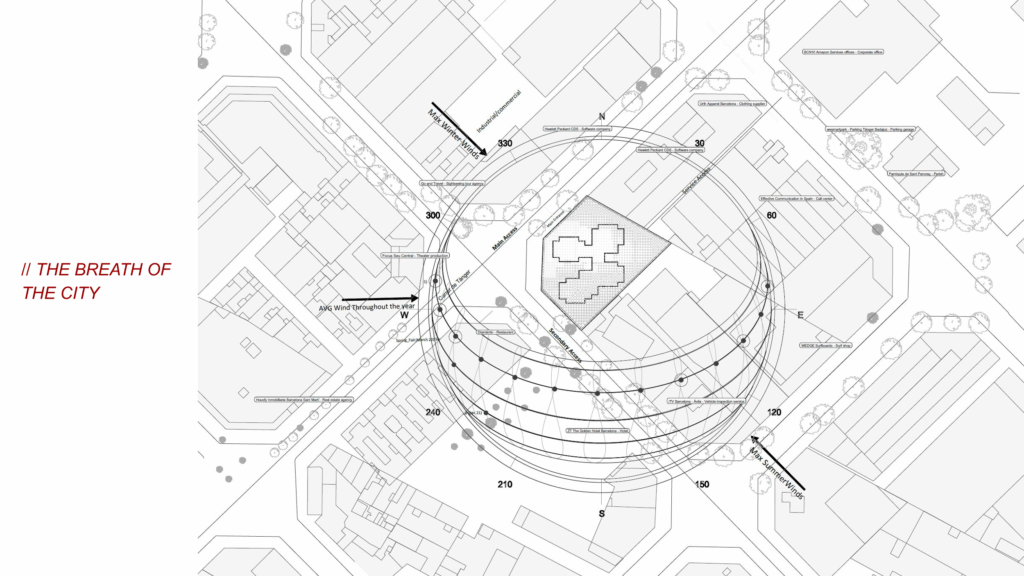
The wind rose depicts that the prevailing winds predominantly arrive from the South-West and South-East, providing ideal orientations for passive ventilation strategies; this informed the positioning of openings to align with humid wind inflows.

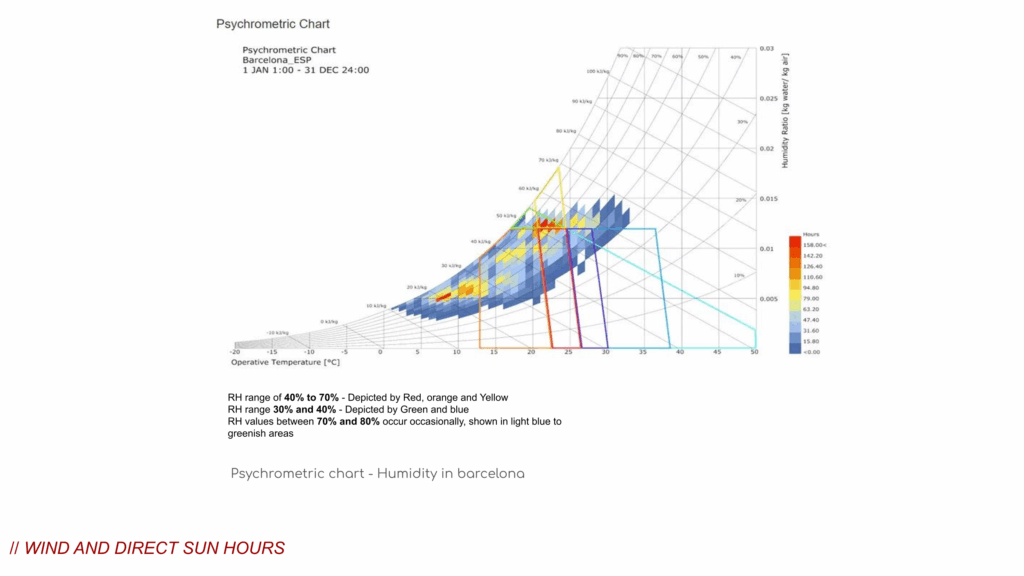
With availability of Esparto species called Lygeum Spartum, the site becomes a potential cultivation site on which our dedicated area can produce a low yield of 605kg and high yield of 1,453Kg per year.
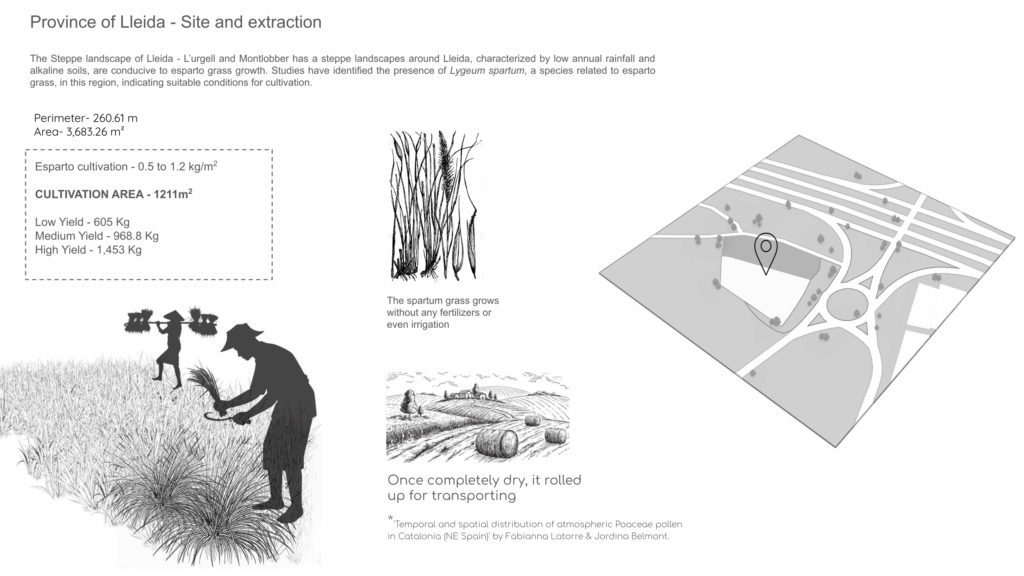
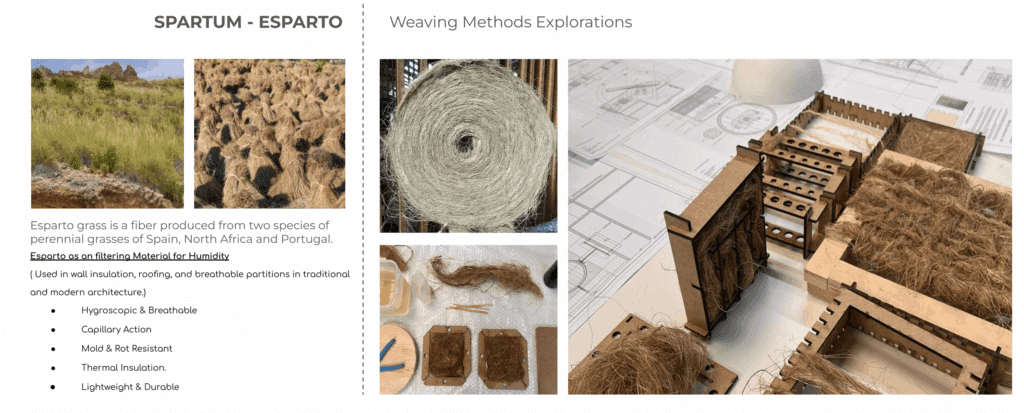
Different iterations and weaving patterns of esparto leading towards choosing the most efficient panel design
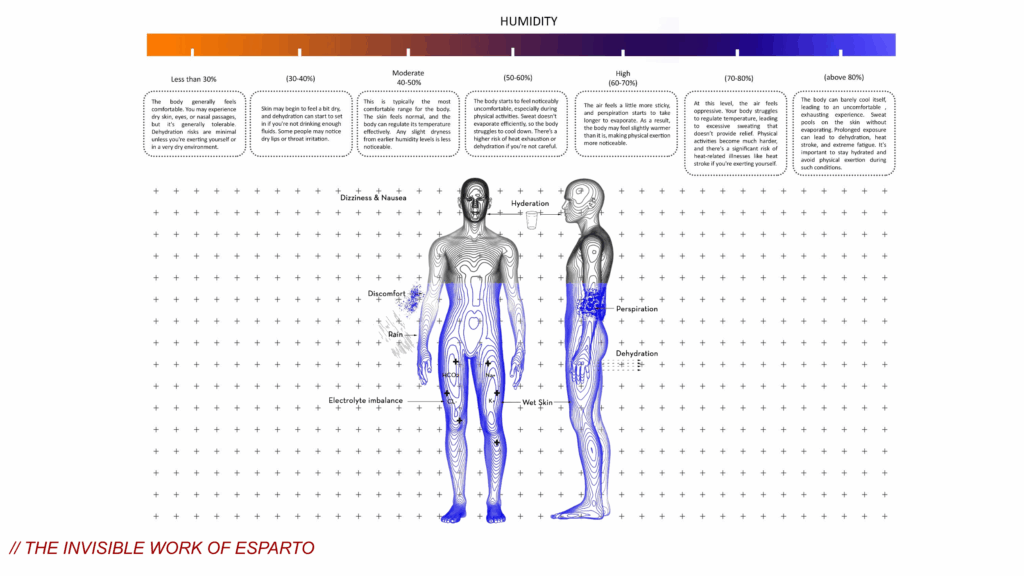
On mapping the effect of humidity on human body, Moderate humidity (40–60%) is ideal for health and comfort, while levels below 30% can cause dryness in the eyes, nasal passages. Above 60% can lead to dehydration, discomfort, impaired thermoregulation, heat stroke or electrolyte imbalance.
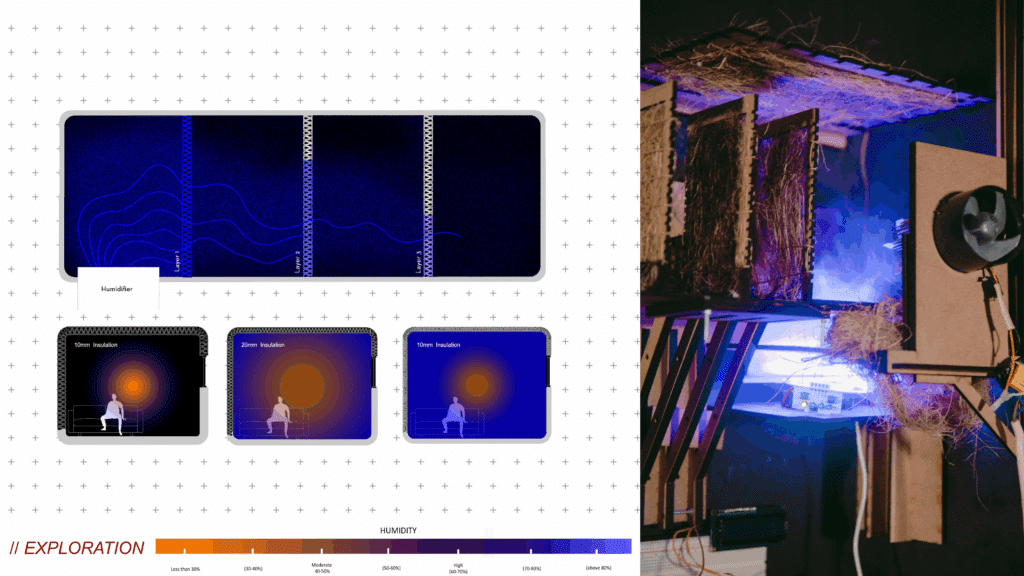
Humidity levels were studied across esparto filters of 10mm, 20mm, and 30mm thicknesses to observe the range of moisture reduction achieved through each configuration.
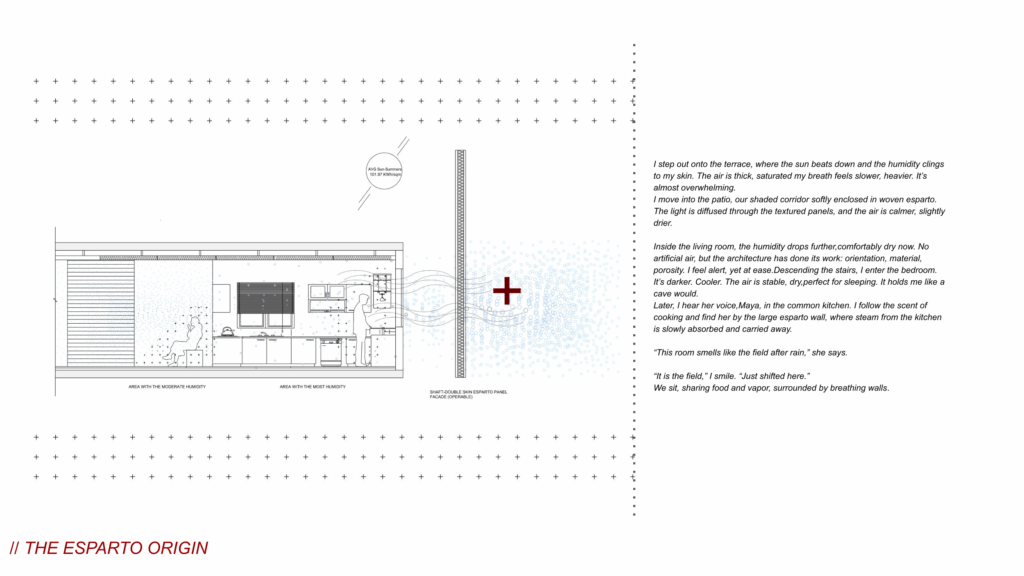
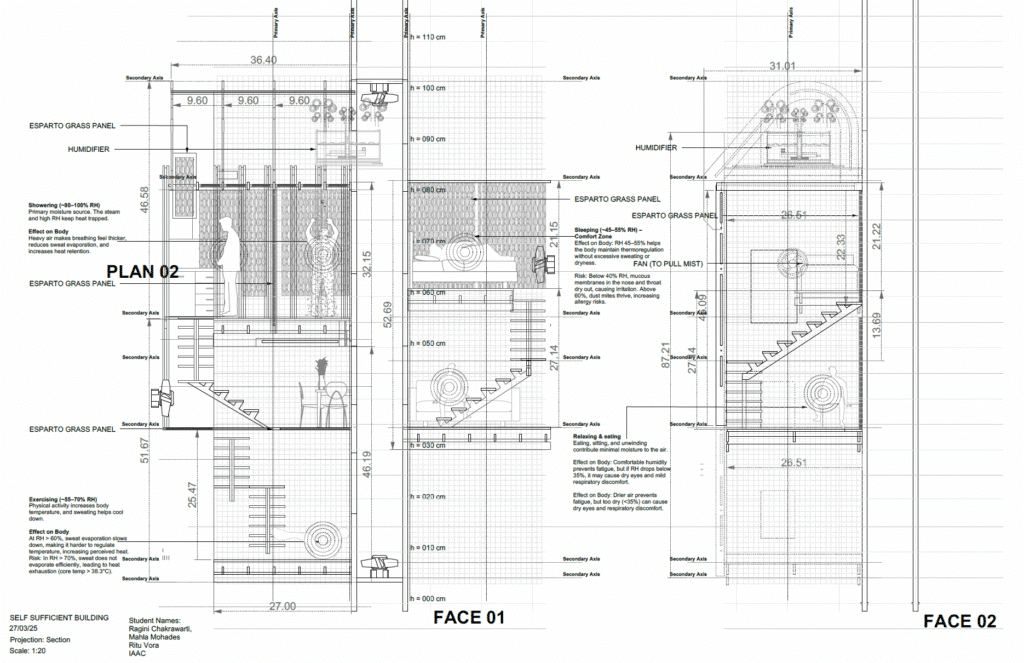
An exploration of room orientations and esparto layering, supported by a central airflow shaft, was conducted to study the material’s interaction with humidity; each room achieved distinct humidity ranges tailored to specific activities such as cooking, exercising, working, and showering
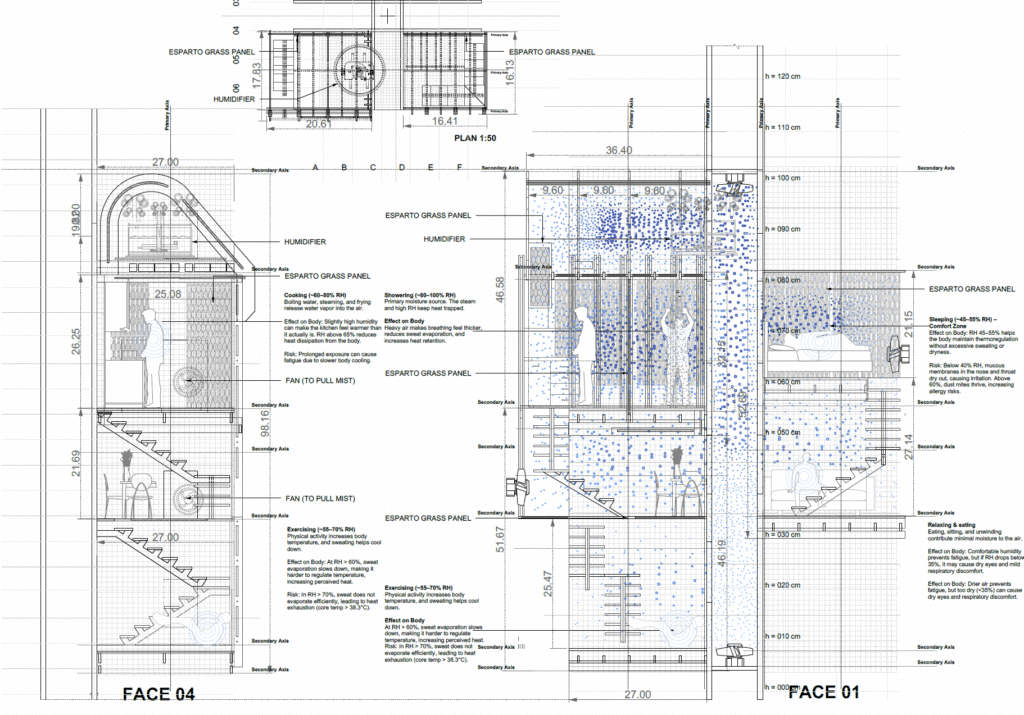
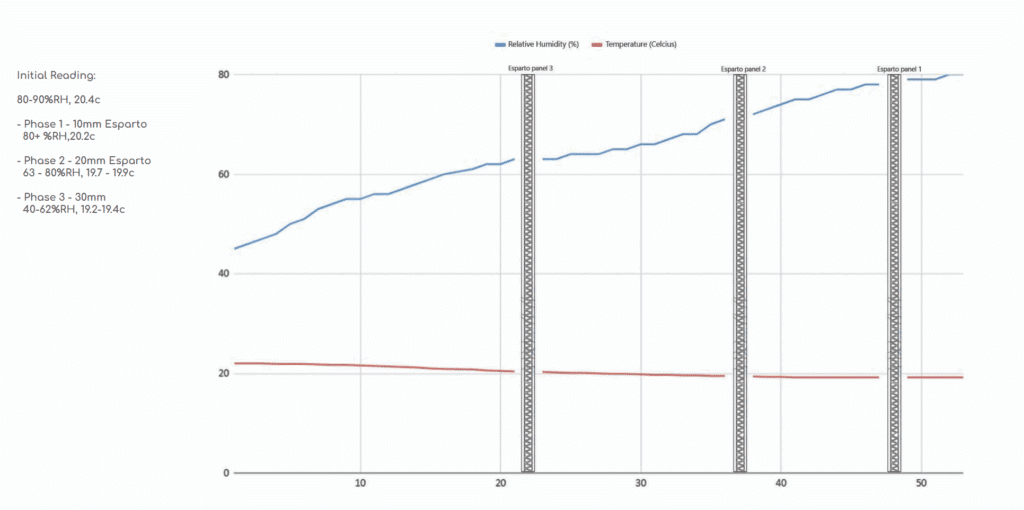
As the esparto filter thickness increased relative humidity levels dropped significantly from over 80% to as low as 40%, between spans of 15cm with a corresponding temperature reduction of nearly 1.2°C—demonstrating esparto’s effectiveness as a passive hygroscopic filter for moderating indoor humidity and thermal comfort.
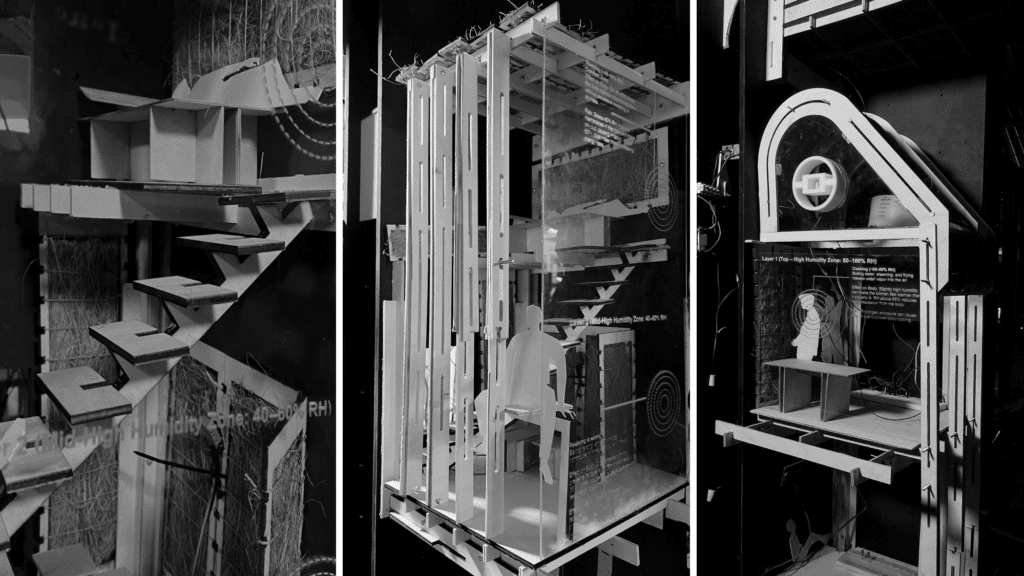
An exploration of room orientations and esparto layering, supported by a central airflow shaft, was conducted to study the material’s interaction with humidity; each room achieved distinct humidity ranges tailored to specific activities such as cooking, exercising, working, and showering.
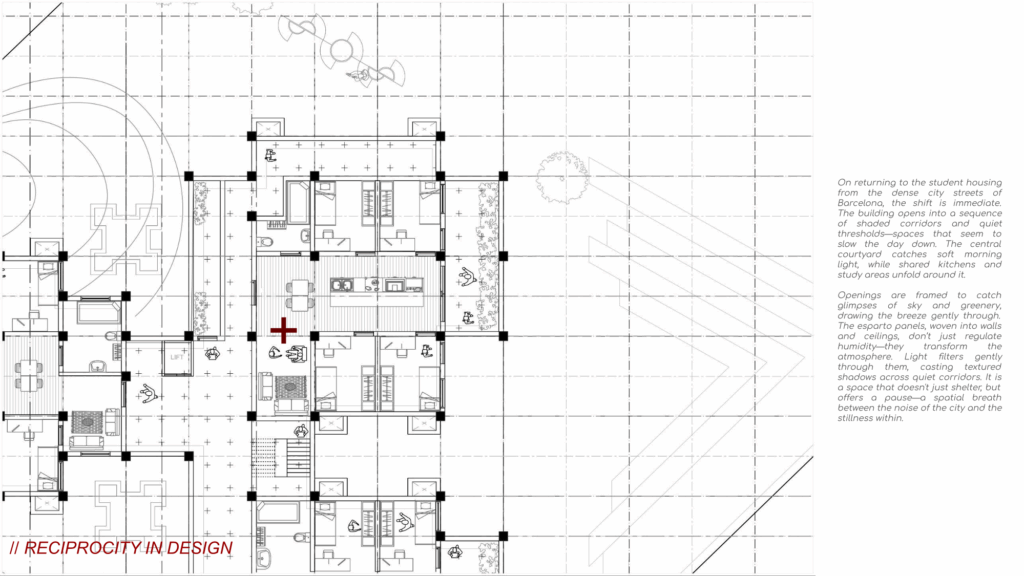

The plan is strategically oriented to minimize solar radiation and enhance wind flow, with the longer façade aligned along the east-west axis to optimize passive solar gain. A central void within the building massing creates a courtyard condition that promotes cross ventilation
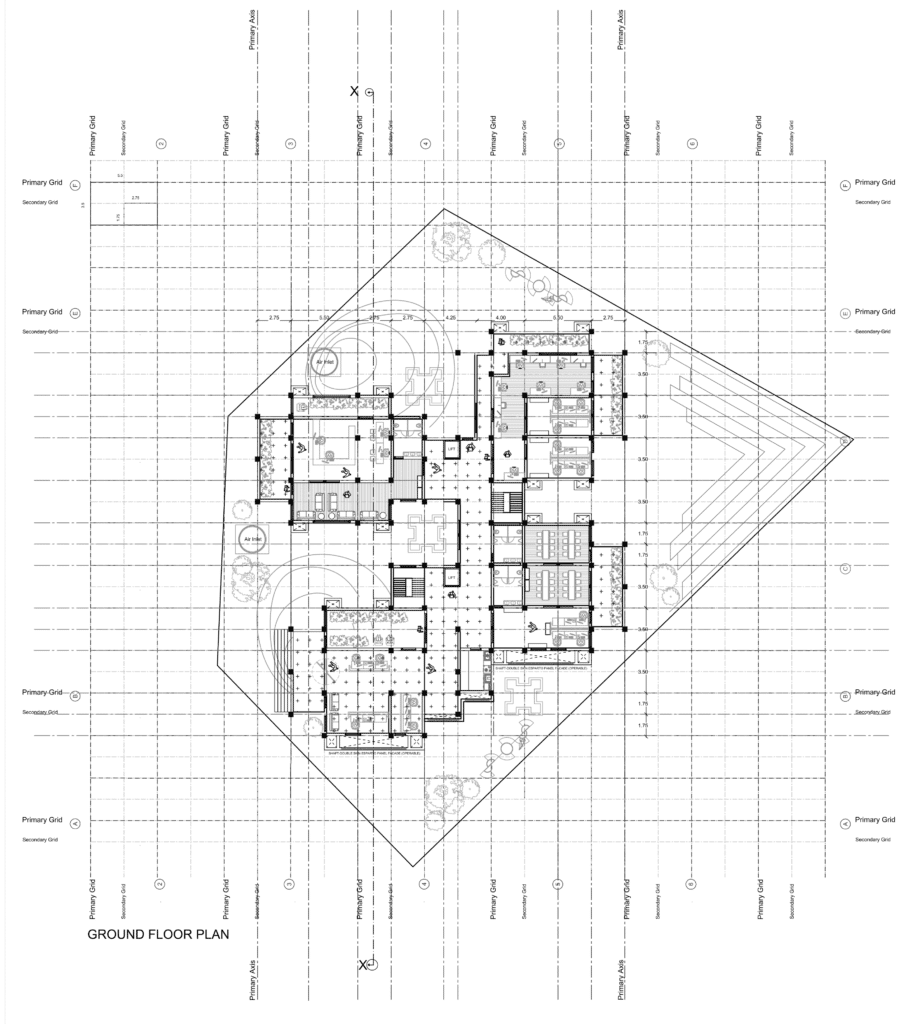
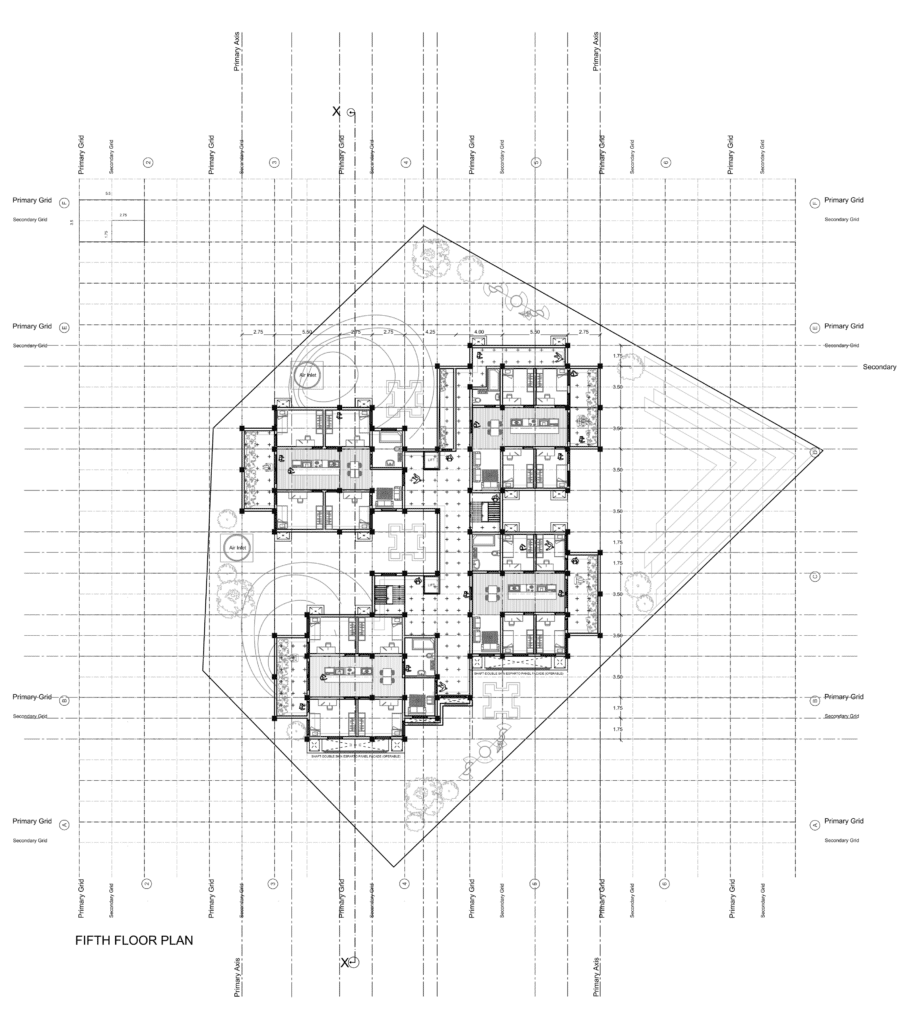
The Ground floor accommodates less activities to reduce direct contact of functional spaces with ground level humidity that is around 78% in barcelona during peak summer months.
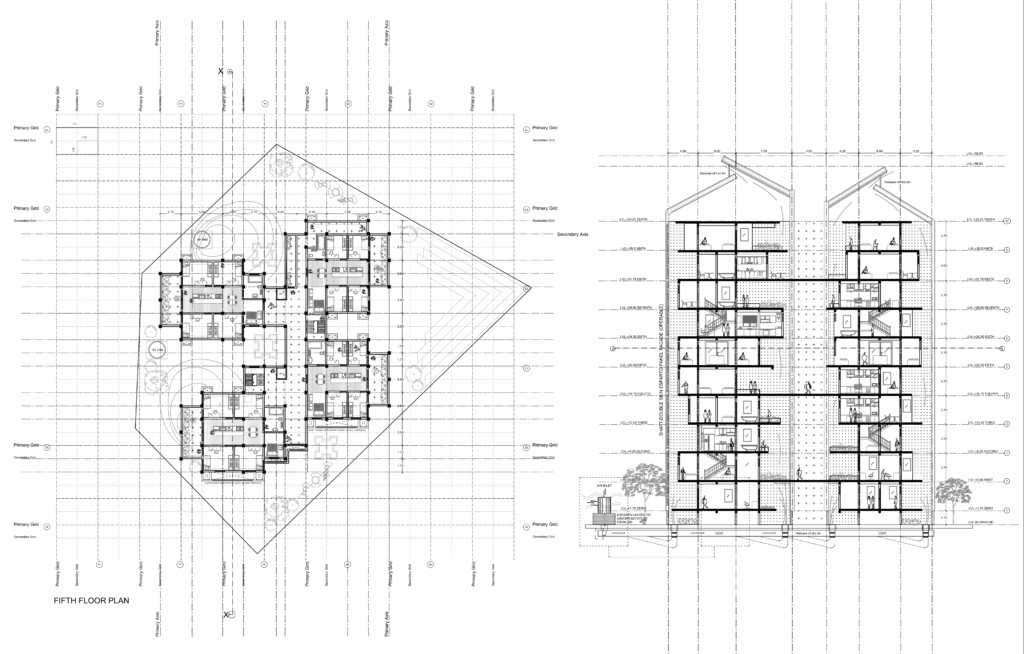
The plan’s arrangement carves out a central courtyard, distributing light and airflow across each floor while encouraging natural social intersections. Vertical shafts and staggered volumes ensure layered spatial experiences – from communal thresholds to quiet, elevated retreats
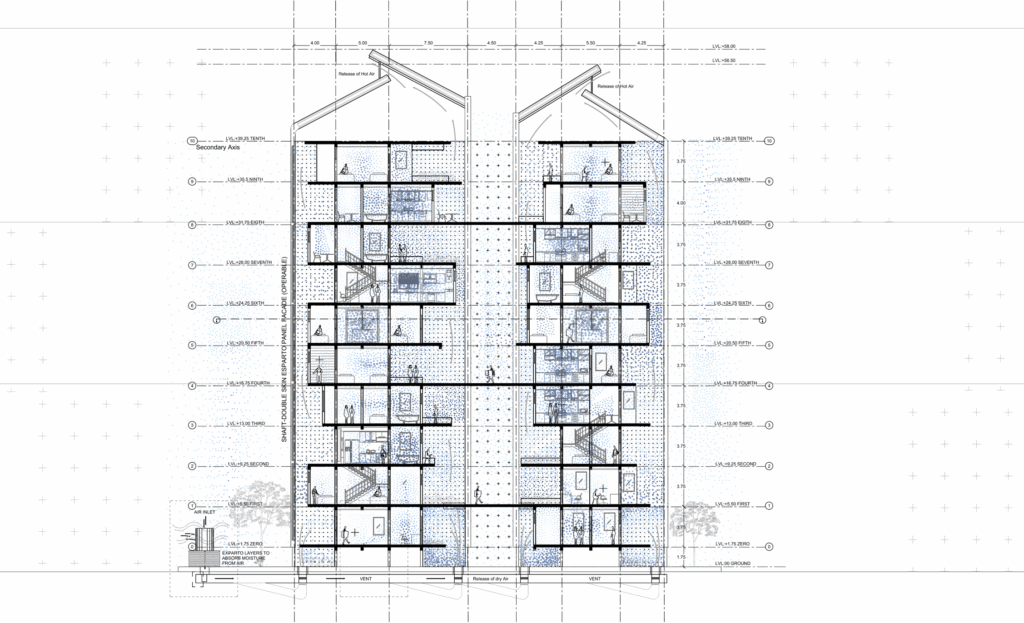
Air is drawn through wind shafts adjacent to the bedrooms, bringing in cool, dry breezes filtered through layers of esparto. Above, the roof forms a solar atrium, encouraging warm air to rise and escape naturally through upper vents. Along the southern façade, operable esparto louvres create a breathable double skin—modulating light, reducing heat gain, and enhancing passive ventilation throughout the building.
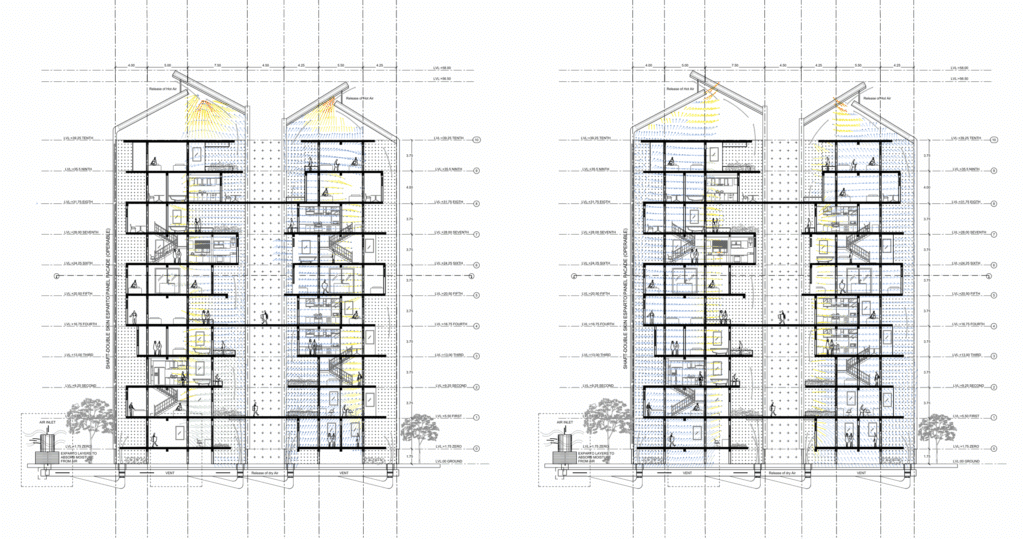
The wind simulation indicates that the earth tunnel and wind shaft system effectively channels and distributes airflow vertically through the building, achieving wind speeds between 1.65 m/s and 2.31 m/s, which supports passive cooling and natural ventilation as intended.The simulation through esparto screening achieves gentle indoor airflow speeds between 1–9 mph. This creates a comfortable microclimate within the living spaces, demonstrating esparto’s efficiency
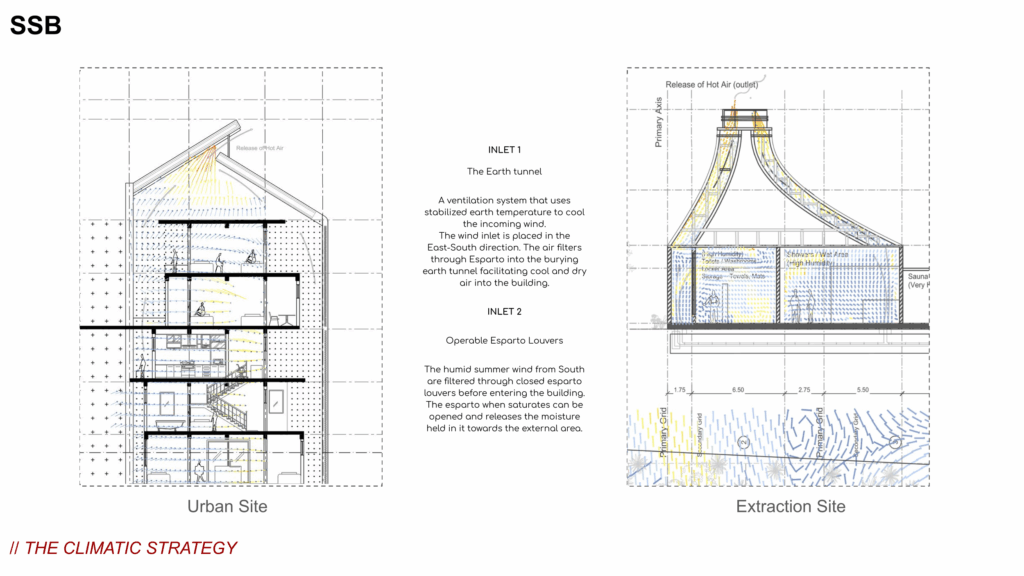
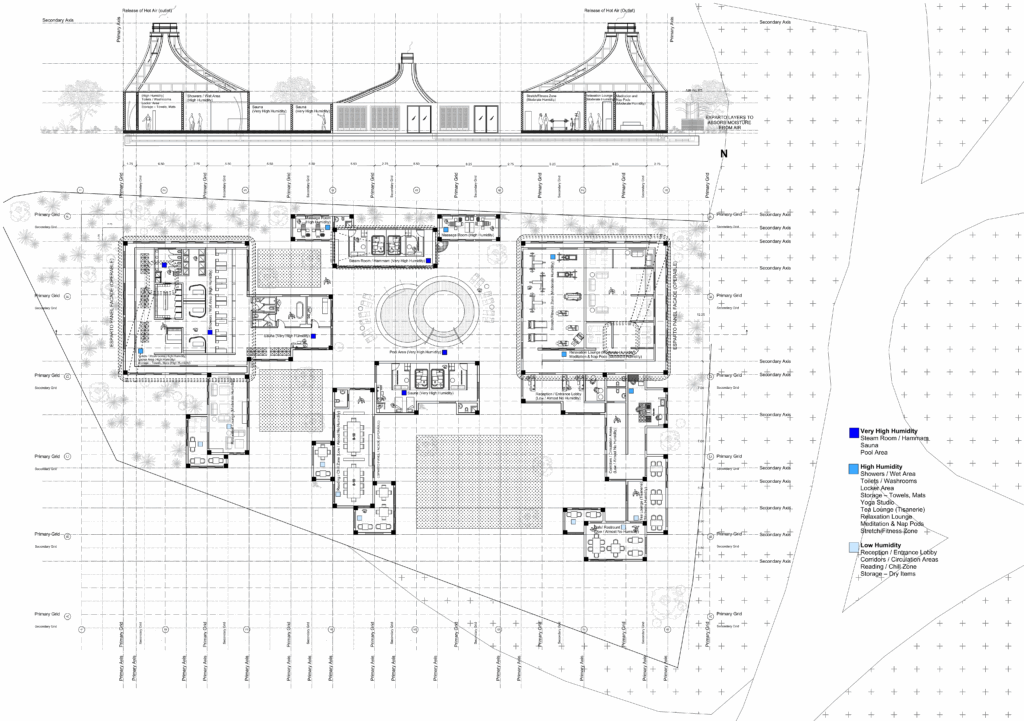
The wellness center for students is thoughtfully integrated into a former extraction site, repurposing the land into a space for regeneration and relaxation. The design organizes rooms based on humidity ranges, placing high-humidity spaces like the hammam and showers in a central “hot core” to contain moisture effectively. Surrounding this core are buffer and quiet zones with moderate to low humidity, ensuring comfort, acoustic balance, and healthy air quality throughout the center.
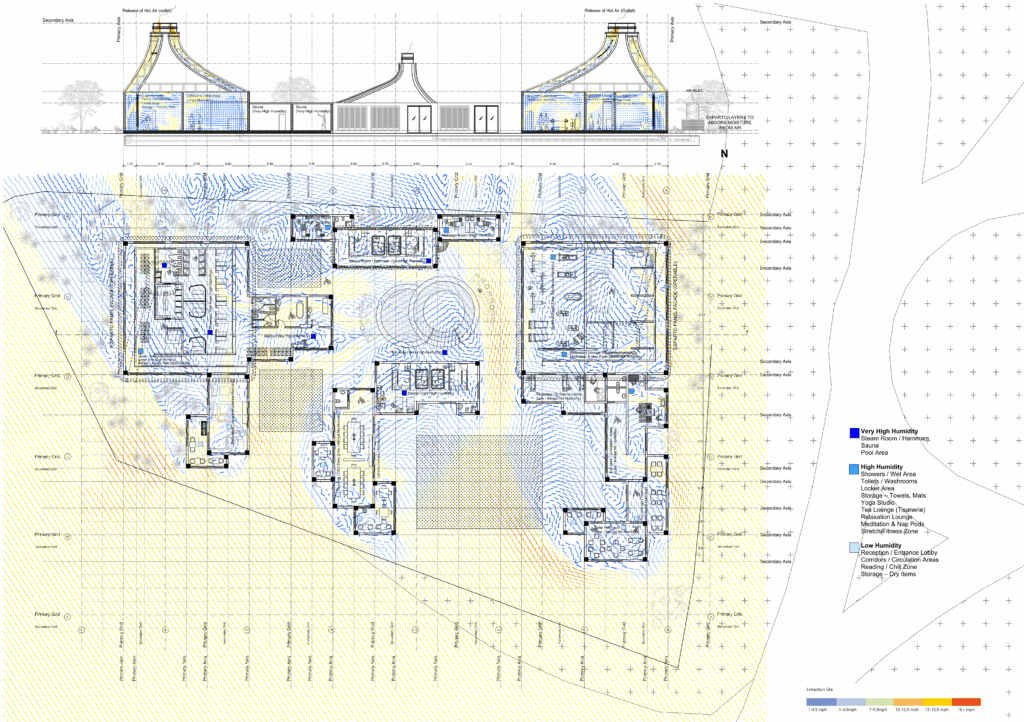

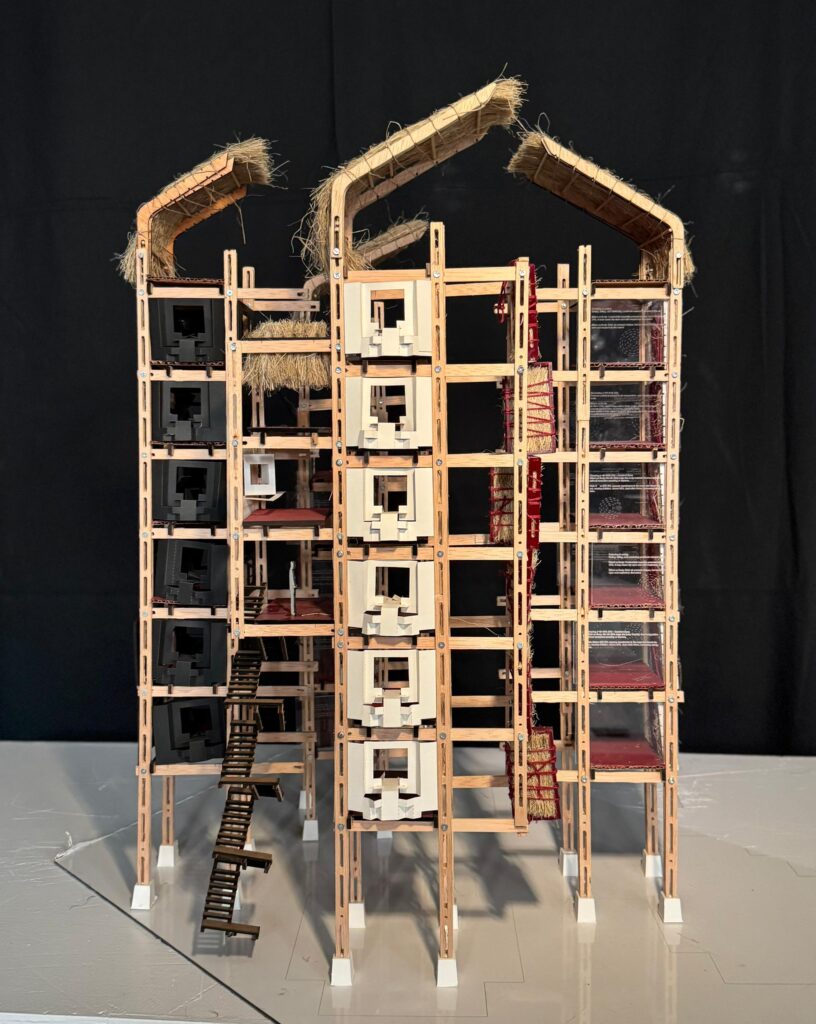
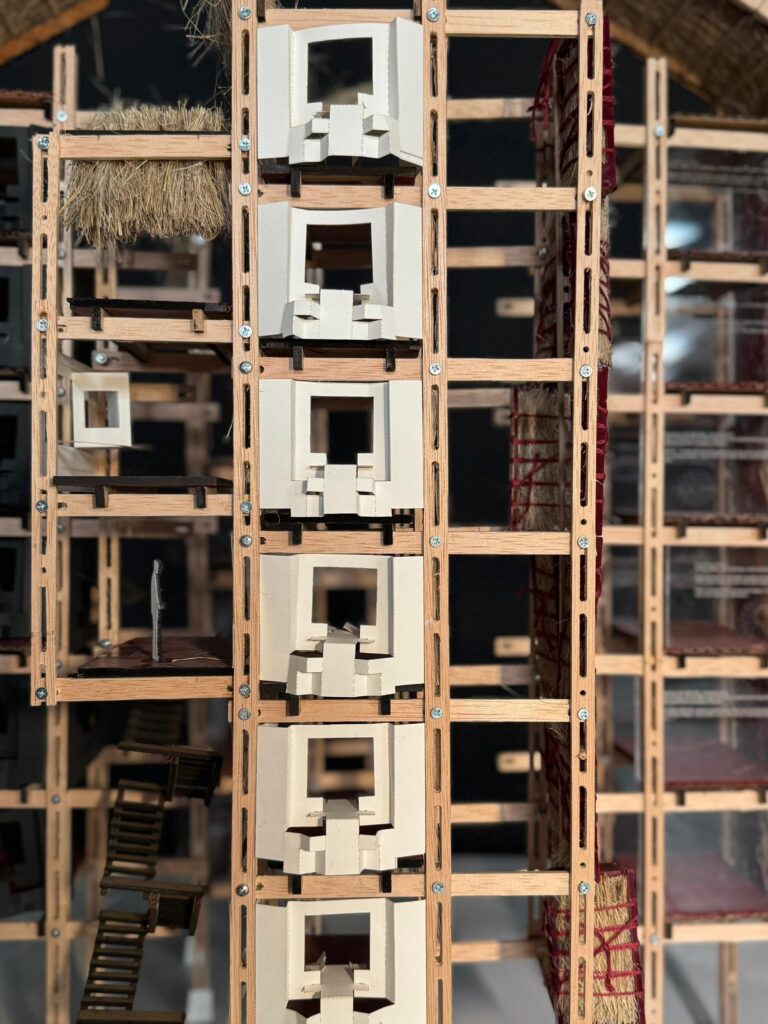
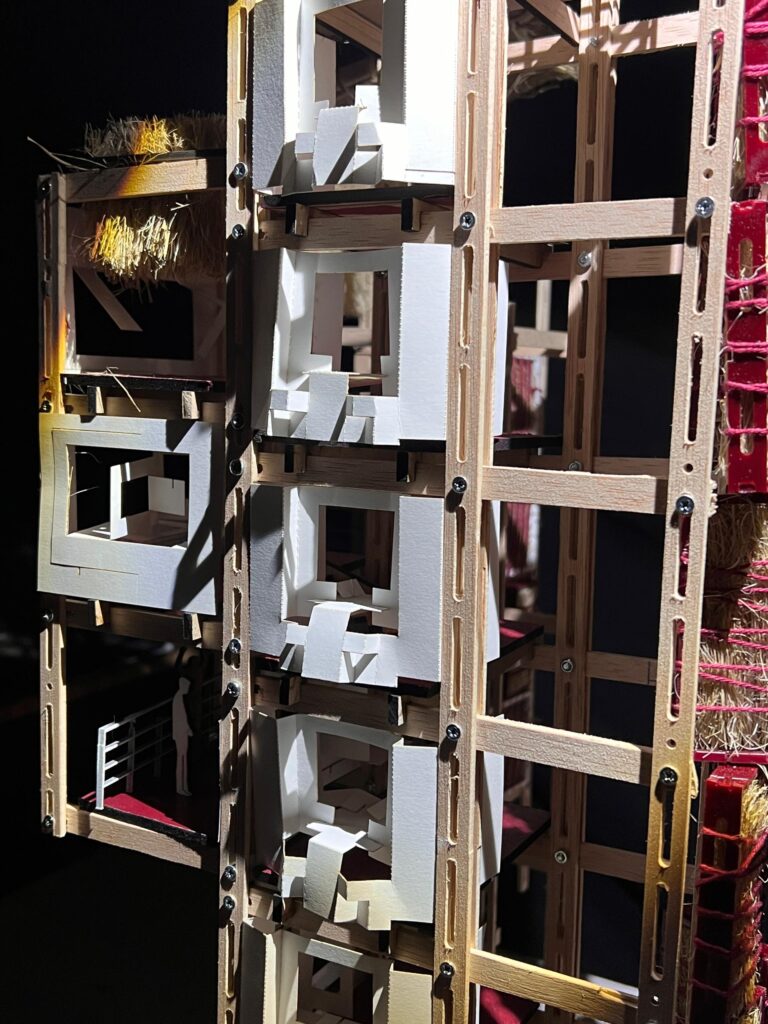
The building is designed to maximize natural air ventilation, ensuring a continuous flow of fresh, clean air throughout the wellness center. A passive cooling system draws in cool air from underground inlets into larger public areas, while strategically placed chimneys allow hot air to rise and exit, maintaining thermal comfort across all humidity zones. the esparto panels are placed mostly the facades to absorb excessive humidity activities happening on the site as well as environment.


